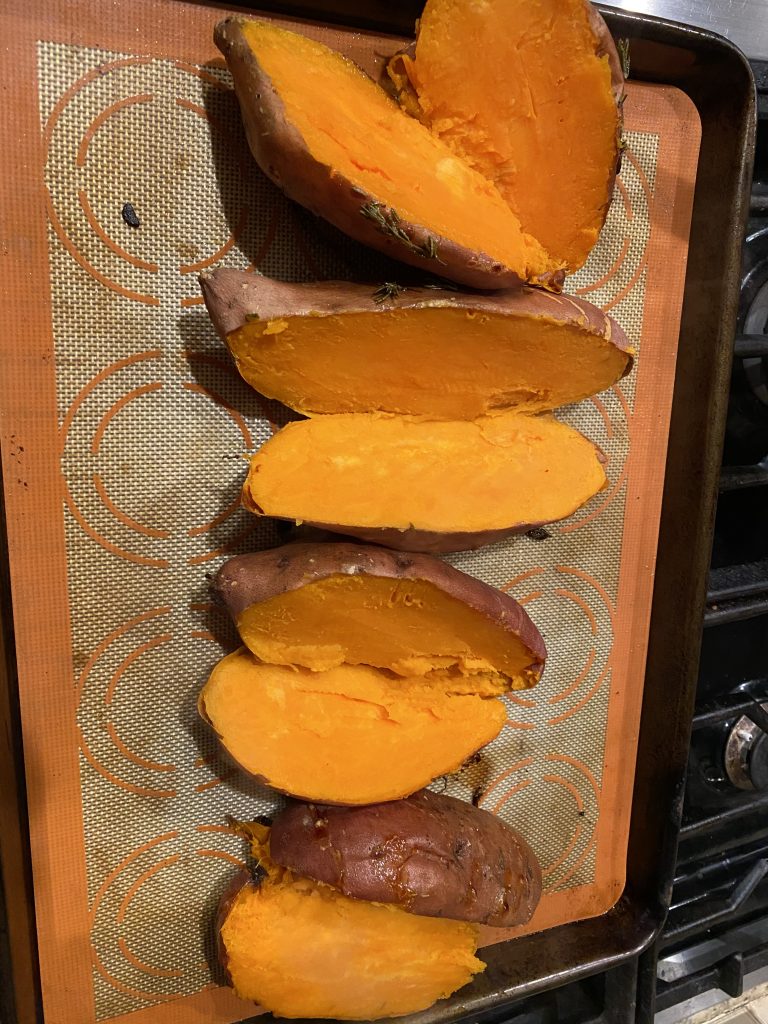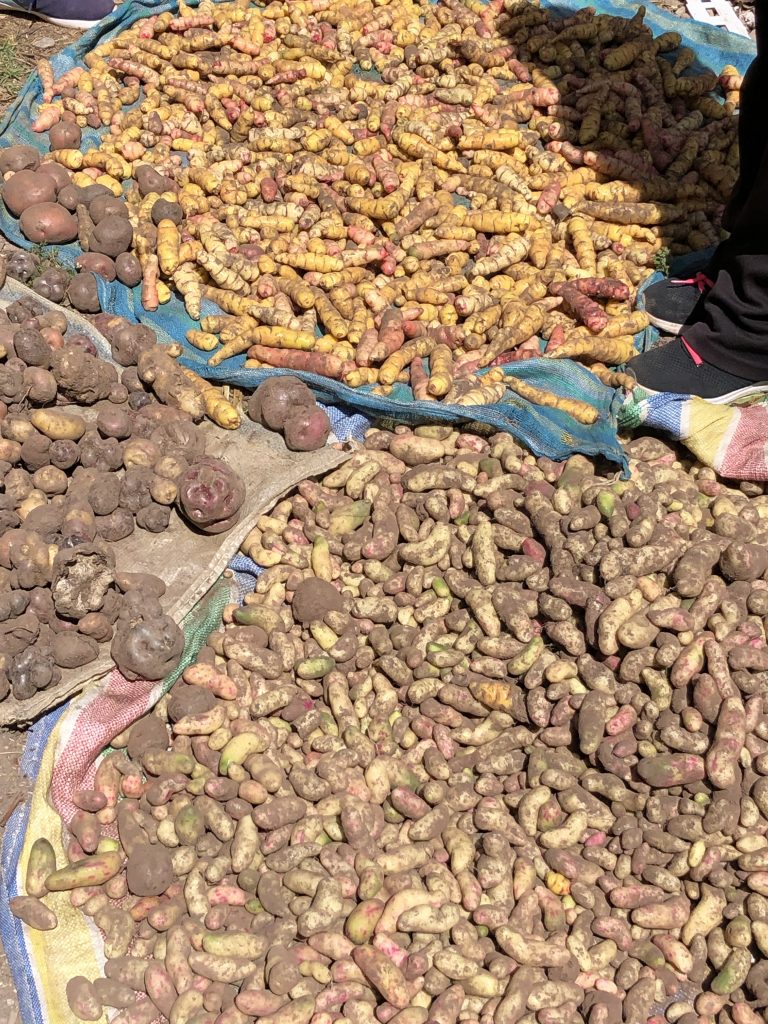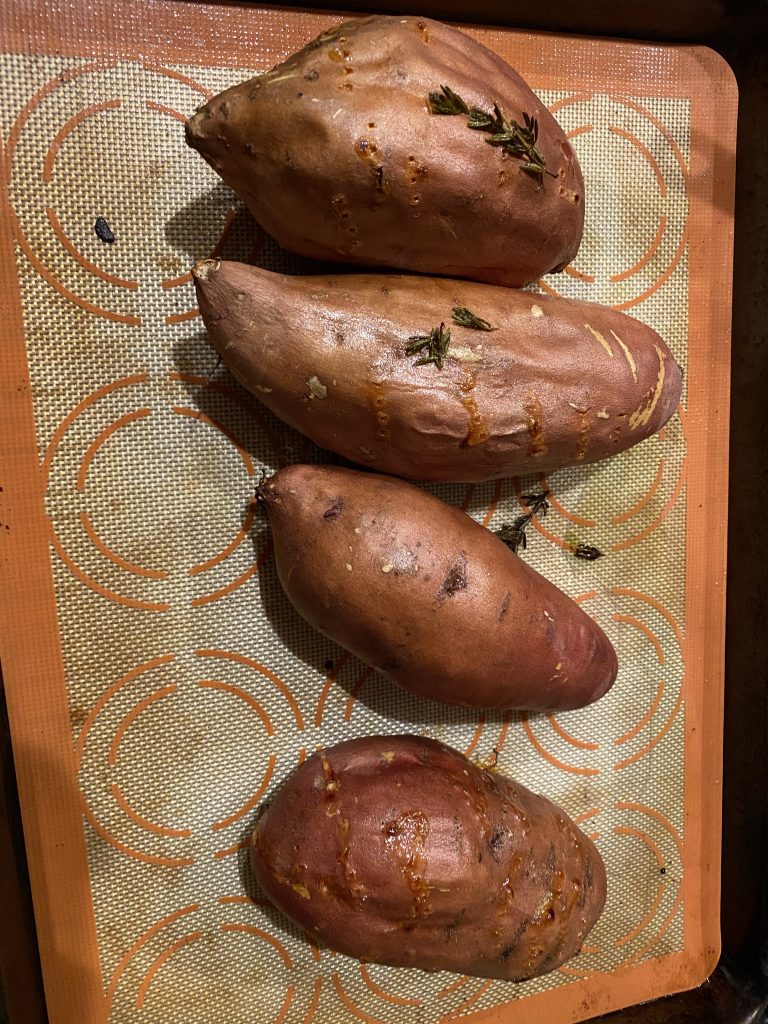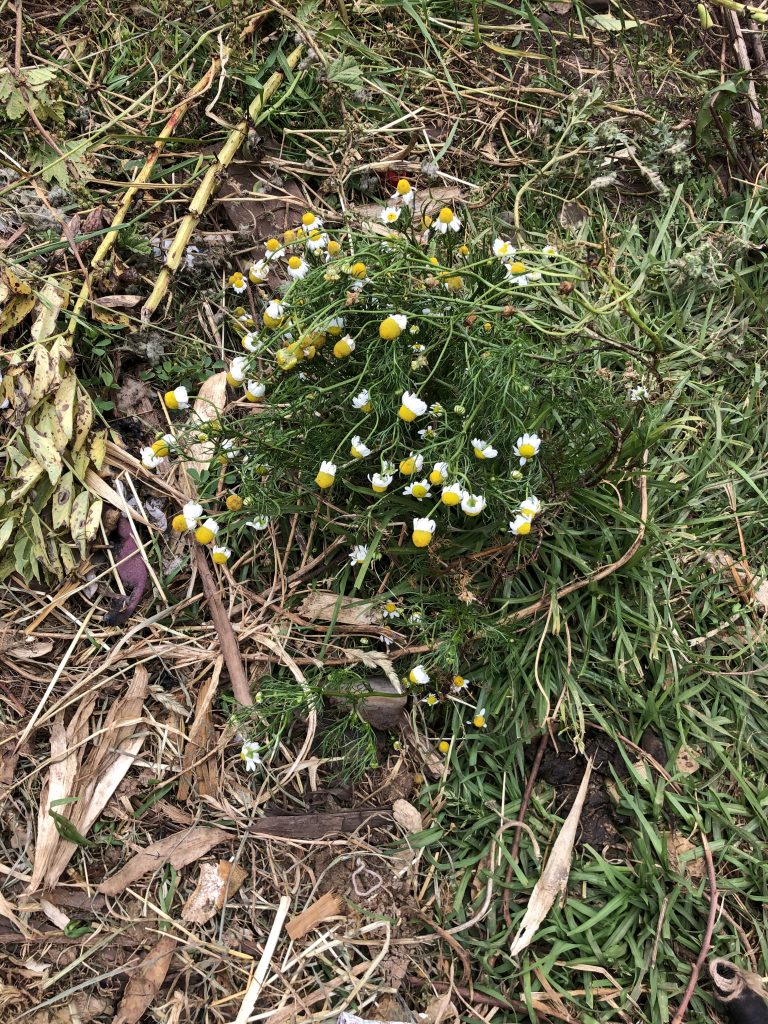Sweet Potatoes for a Sweet Life: The Indigenous Foods of the Quechuan People

December 1, 2020
by drplasticpicker
How beautiful is the sweet potatoe? I didn’t realize last night when we each had a half baked sweet potatoe that it matched the edging of our well-loved silicone baking sheet. Mr. Plastic Picker and I went to Costco last weekend, and I find great joy is buying food in bulk now. We hardly ever purchase the ready made foods and now cook real food. This has mostly been to avert plastic packaging and to avoid palm oil which is in most frozen or prepackaged foods. The flip side is that it has really inspired me to be more creative in the kitchen. It’s amazing what you can learn on the internet if you are motivated.
Yesterday was a semi-normal non-frustrating day at work. I had a minor scheduling issue to work through with one of the young pediatricians, and she was patient enough to listen to my nonsensical rantings about Human Resources and Policies and Procedures. Trying to navigate the real world needs of physicians, rules and regulations and also common sense – can be challenging. It helps that Dr. Plastic Picker is very rule orientated and have common sense. It helps most that I am fiscally responsible and good with numbers. Mr. Plastic Picker is working with his sisters on finalizing his parent’s trust and estates. I am CFO of our family, and have nothing to do with my in-law’s finances and take just passing note of things I hear about. They buy onions, eggs and rice for our family and that is it. He asked me what I thought their networth was. I thought for 15 seconds and said a number, and I was almost right on. My dear husband paused for a second in astonishment. Yes, I am that good.
It’s hard to fool Dr. Plastic Picker. When I see something of true worth, I know it. And a sweet potatoe, oh what a wonderful root vegetable. I never thought of it as a vegetable but rather as a starch, but after reading Wikipedia – it really is a root vegetable. I forgot that I took a Botany Class in college and these days I am so glad I did. Food is part of healthcare and back in the 1990s – I don’t think we fully realized it. Sweet potatoes per Wikipedia originated in Central and South America. “In Peru, the Quechua name for a type of sweet potato is kumar, strikingly similar to the Polynesian name kumara and its regional Oceanic cognates (kumala, umala, ‘uala, etc.), which has led some scholars to suspect an instance of pre-Columbian trans atlantic contact. This theory is also supported by genetic evidence.” I remeber working in Peru and among the Quechuan communities and meeting a potatoe seller that had a wide variety of potatoes and root vegetables in their yard. I always wondered why we were there in the Andes (I had gone because the group had needed a pediatrician to precept the family practice residents).” Given the nutritional values of sweet potatoes, filled with beta-carotene, vitamin A, fiber. Given also the native Quinoa grain being ruthlessly exported in exchange for cheap wheat by the world. Given that the word papas comes from a Quechuan word. I am now even more resolved that we went into the Quechuan community knowing very little about the richness of their food and culture and should have been more informed. I saw about 400 pediatric patients and all those children were almost fully breastfed. The Quechuan communities have longer lifespans than we do. Now who is really helping who?

All of us should really eat more sweet potatoes especially in lieu of rice or other carbohydrates. Everything in moderation. And with those meandering thoughts about sweet potatoes, here is how we cooked ours.

Sweet Potatoes Baked with Rosemary Infused Olive Oil
Ingredients
- 4 sweet potatoes (Costco ones are huge likely mutated)
- olive oil (optional)
Directions
- Preheat oven to 450. Wash sweet potatoes very well. Take a fork and stab holes in the potatoes (you will only be able to go in a centimeter or and that is fine) around the tuber. Then place on silicone mat or greesed baking sheet. Rub on olive oil or drizzle on the potatoes. Bake in oven for 50 minutes.
- You can eat it many ways, but the point of this blog is to enjoy the natural sweetness and goodness of the main food. I put just a bit of butter on half of a potatoe. You can top with cinamon, a little bit of brown sugar and butter. Be judicious with the sugar.
With that beautiful memory, I will always think of the trip I made to Peru about 1.5 years ago. I will go back if my friends from the Family Practice residency ask me again. I will go back to see pediatric patients but also to learn more about the richness of their culinary history because I think they have more to teach us than we have to teach them. Right now Peru is in political turmoil. I really hope everything goes okay there. Peru has many rainforest that need to be proected, and the more land rights restored to the Quechuan people the better. This is why our blog donates disproportionately to Peruvian Rainforest through the Rainforest Trust.

1 thought on “Sweet Potatoes for a Sweet Life: The Indigenous Foods of the Quechuan People”
-
Pingback: A to Z: Dr. Plastic Picker’s Cookbook for Kids! – Dr. Plastic Picker
